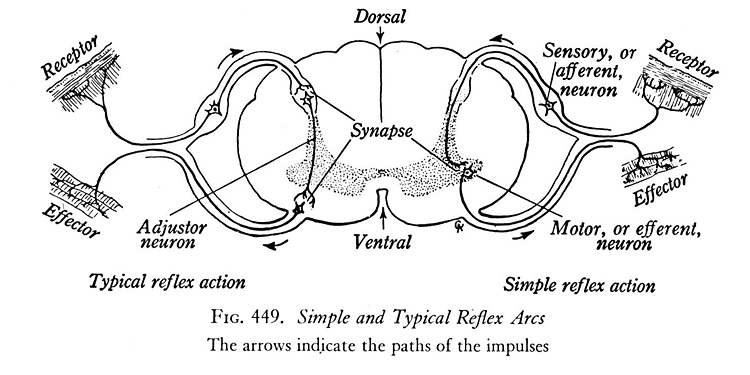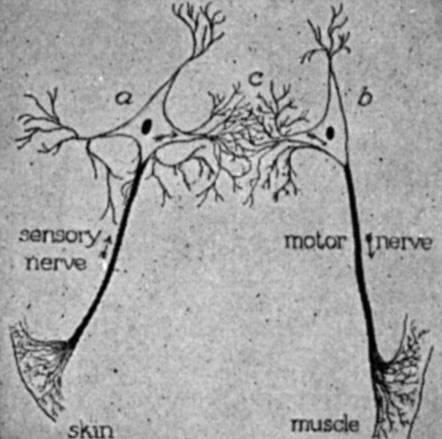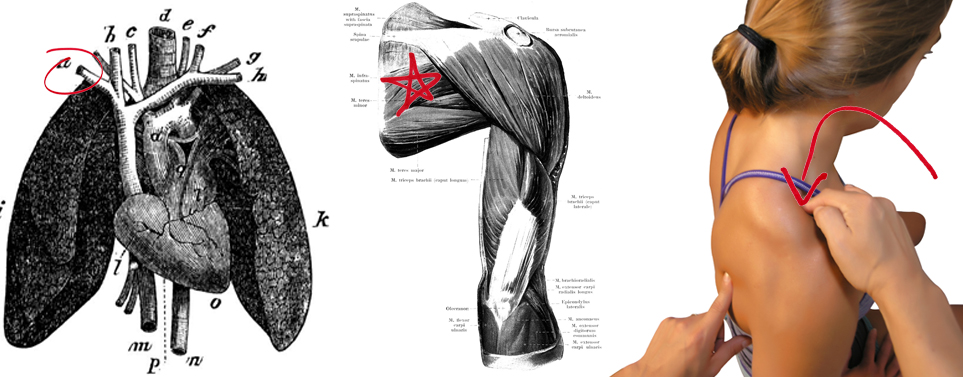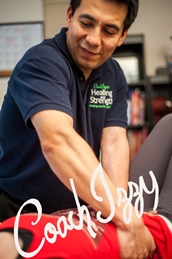What comes to mind when you hear the word reflex? Probably actions so engraved in our minds, that we execute them without thinking.
But reflexes—in the neurological context—are actions regulated by the autonomic nervous system. If you were ever startled by a hot surface and yanked your hand away, then you’re acquainted with their instantaneous nature. They happen before we get a chance to think.

That’s because reflex signals, namely reflex arcs, never travel to the brain, making the reaction automatic and out of our control. And it is reflex arcs what we address in the world of Counterstrain.
The How-To of Reflex Arcs
We’ve already discussed the overall mechanics of Fascial Counterstrain and why we prioritize the deep fascia. Now you get to see what, in turn, affects the deep fascia.
Let’s look at an example of a reflex on a larger scale. Think of the accidental hand contact with a hot object.
- A sensory receptor detects the threatening stimulus and fires a signal.
- The signal travels from the point of contact to the dorsal roots of the spinal cord via afferent neurons.
- From there, the signal passes through the grey matter of the spinal cord where the signal is relayed from the efferent neuron to an association neuron.
- The association neuron transmits the signal through efferent neurons in the ventral roots from the spinal cord.
- This leads to an automatic kinesthetic response via the musculoskeletal system.

When it comes to reflex arcs in the deep fascia, it is the abundant Type III and Type IV nerve receptors—sensitive to mechanical and chemical stimulus—what start the chain reaction. Not only will those receptors signal fascial contraction, they will also release neurotransmitters that promote vasodilation, edema, and lower pain threshold.
The problem with reflex arcs is that they remain active after their protective role has been fulfilled. The ones originating from trauma are evident and usually significant, but the smaller ones rarely disrupt life, that is until their accumulation reaches a threshold.
Revisiting Direction of Ease
It is standard to focus on major structural distortions, debilitating pain, and restrictions in range in motion.
The therapy world will look at the rotated hip, the elevated shoulder, the tight hamstring, or weak glutes and attempt to correct them. Yet when the dysfunction remains, they classify it as idiopathic, meaning the problem is unknown origin and could’ve never been predicted.
But there’s no such mystery to the Fascial Counterstrainer. We understand that unless we identify the protective reflex arcs, the symptoms will remain.
In future segments, I’ll discuss our method of assessment, but for now, suffice to say that once our assessment points us to the correct system and structure, all we have to do is follow a universal Counterstrain principle:
Follow the direction of ease
When the fascia of a structure—whether an artery, nerve, vein, lymphatic vessel, visceral anchor/lining, ligament, etc.—is under a protective reflex, it attempts to contract toward its origin, thereby creating a direction where the affected segment moves with the most ease.
This contraction involves more than fascia. The Robert Schleip study Fascial plasticity – a new neurobiological explanation: Part 1 (January 2003 Volume 7, Issue 1, Pages 11–19) in the Journal of Bodywork and Movement Therapies, showed that the fascial reaction is enough to contract musculoskeletal tissue. It this contraction what we enhance until the demands that created it are satisfied.
Think of Thoracic Outlet Syndrome (TOS) which frequently blames tight scalene muscles. Prior to my Fascial Counterstrain training, I would’ve agreed and treated said structures. But now I know the scalenes may be responding to reflex arcs in the in sympathetic ganglions, or thoracic veins, or upper extremity arteries, or lung pleura. Once I shut off said reflex arcs, the scalenes let go, even if never directly treated. For the issue of TOS, the subclavian vein—as illustrated—is one often involved.

Protective reflex arcs in the outer layer (tunica adventitia) of the subclavian vein (circled) contribute to TOS and shoulder dysfunctions. The tender point (located in the mass of the infraspinatus muscle) is used to monitor treatment as the vein is guided toward its origin.
Do Reflex Arcs Return?
Even though protective reflex arcs are gone after being shut off, it doesn’t mean we won’t form new ones if we disrupt fascial harmony again.
Remember that Type III and Type IV nerve receptors respond to mechanical stimuli, and we can trigger them by disrupting the Length-Tension Relationship.
The Length-Tension Relationship states that contractile tissues—as in muscles and fascia—operate with the most efficiency when close to a specific length. This length provides with the most stability while allowing mobility to complete life tasks.
When internal or external forces compress or stretch these tissues beyond the optimal range, the ability of these tissues to generate optimal force is compromised—or weakened.
Our bodies can cope with minor changes without lasting effects but when the disruption is prolonged, or of a great magnitude, our bodies sense the vulnerability. The response is the fascial protective reflex arc.
Consider prolonged seating. I’ve found it in my practice to be a significant factor for protective reflex arcs in the visceral fascia. I can shut off the reflex arcs during treatment but if the habit remains, new reflex arcs in the same region will replace them.
Type III and Type IV nerve receptors are also sensitive to chemical stimuli. Take for instance, allergens. Allergies can trigger reflex arcs in the lymphatic and venous system which can manifest as bloating, numbness, or weakness. These reflex arcs can be shut off but the dysfunctions will return if one is exposed to those allergens again.
Are some people more prone to reflex arcs than others? My experience shows me that yes, but only because of factors that are within their control. Many unexpected injuries take place when several of those factors get overlooked.
And that, friends, is the topic of the next article.
Until next time, may you enjoy a fit and pain-free life!

Want to experience the jaw-dropping benefits of Fascial-Counterstrain? Click HERE and I’ll be happy to welcome you to my practice.
